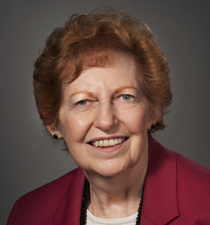By Justine Calise, PhD Candidate, Hofstra-Northwell School of Medicine
Speakers: Dr. Jesse Roth, MD, FACP, and Dr. Bettie Steinberg, PhD


Chances are, if you are a trainee in the sciences and thinking forward in advancing your career to the next level, you have probably heard of the elevator pitch. For most people the thought of crafting one is scary; the actual elevator ride is the least of it! First impressions matter, and what you say about yourself as well as how you say it could result in the best career opportunity that is ever happened to you, or…nothing! Considering the potential consequences of not knowing what the elevator pitch is or how to make one, it is something most young scientists want to learn to master.
The “elevator pitch” is a short persuasive speech, usually no longer than a few sentences, designed to sell yourself as a valuable candidate with much to offer. Your skills, interests, hopes and dreams are all things that can be mentioned. It should take no longer than a short elevator ride to do this. It might not sound so hard, but getting your point across in a concise, understandable way that leaves your audience interested is the tough part.
On March 31, 2017, we hosted Drs. Jesse Roth and Bettie Steinberg in a session on developing the elevator pitch at the Feinstein Institute for Medical Research. We had a total of 17 grad students and postdocs who both wanted to stay in academia and transition into non-academic fields.
Our first exercise was to write why we wanted to develop our elevator pitch. Why is it important to us? What are our goals? We took turns sharing our responses with the group, who as a whole was unsurprisingly shy. Personally, I want people to understand what I do, what I am passionate about, that I have social skills, and can avoid using jargon when talking to others.
Bettie said the first thing we need to do is to know our audience. We need to be able to talk to experts and laypeople. The pitch we use for a colleague in the immunology lab is not going to be the same as the one we use for a physician or a physicist. Jesse said it is best to start broad with the first sentence of the pitch, and narrower with each subsequent sentence. The pitch is not necessarily a one-sided conversation; how narrow we go will depend on what the person asks you. Some helpful points:
- Identify a few nouns to center your pitch for your audience. I work in an immunology lab that studies lupus and I focus on genotype-phenotype effects in human B cells. If I were talking to a layperson, some good nouns and terms for my pitch would be “immune system”, “genes”, “our cells harming our own bodies instead of viruses or bacteria”. I would reserve “autoimmune” or “phenotype” for someone more specialized.
- Pick one area of all the things you work on for each elevator pitch. Put yourself in the mindset of the person you are talking to. What is the “bait” to catch them? We each have a library of skills, and it is tricky to cram all of them into one pitch. If you are in neuroscience and work on drug discovery for modulating behavior and you want to talk to a chemist, focus on the drugs. If you want to talk to a psychologist, make a pitch focusing on the behavior.
- Practice with pitch with your friends and family. They make good lay audiences.
Since we will be talking to all kinds of good people with different backgrounds, we should have several pitches stored in our brains for the right moment. Jesse also went into detail about some things that often go unrealized that are independent of what you say:
- Hearing diminishes with age. Speak louder to older people. High pitched sounds are lost first, putting women at a disadvantage because women tend to be higher talkers. There is a trick: deepen your voice talking to older people, but do it without looking too obvious. (I have never tried to do this before; personally I am not confident I would be able to pull it off!)
- Use body language and eye contact. I am one of those people that uses a lot of body language. I can not help it; I am Italian! But not all cultures are the same and some are less comfortable with body language. We were assured that in America it is perfectly acceptable and encouraged to add in some nonverbal communication.
- Modulate voice speed. Do not talk too fast, but do emphasize key words with stress. Try to avoid talking in monotone; that is the worst! This can be difficult for non-native English speakers; English is a highly stressed language, but their mother language might not be stressed.
- Your clothes. You do not want the person to remember you solely for your outfit. Granted, it can be hard to judge what to wear to an event. If you end up being the only one dressed significantly different, it is OK to joke about it. Everyone makes mistakes…
Many expressed concerns about meeting famous senior scientists. What do we say? How do we break the ice? Jesse said small talk can be an icebreaker, or mentioning a paper they published. Find something you have in common or something about their work that interests you. Go up to them, say hi, and mention it. Bettie assured us that most senior scientists are flattered to meet you if you just say you wanted to meet them. If they are not and act rude, forget them: they are not worth your time. A lot of us think they have this whole doing science thing all figured out. Bettie said they are more like us than we think. Even senior scientists get imposter syndrome and worry about their careers. (“Did I make a mistake in that grant?” “Another paper came out contradicting mine…did I misinterpret my data??”).
Overall, the energy of the group was very happy and grateful at the end of the session, and many were inspired to form their own separate little pitch practice meetup groups on the side! We were all given the tools we need to formulate situation-dependent pitches, and we understood the importance of having this skill for our professional development.
Author description: Justine is a PhD student at the Feinstein Institute for Medical Research. Her work specializes in human B cell immunology and genetics.
Author contact: justinecalise@gmail.com
